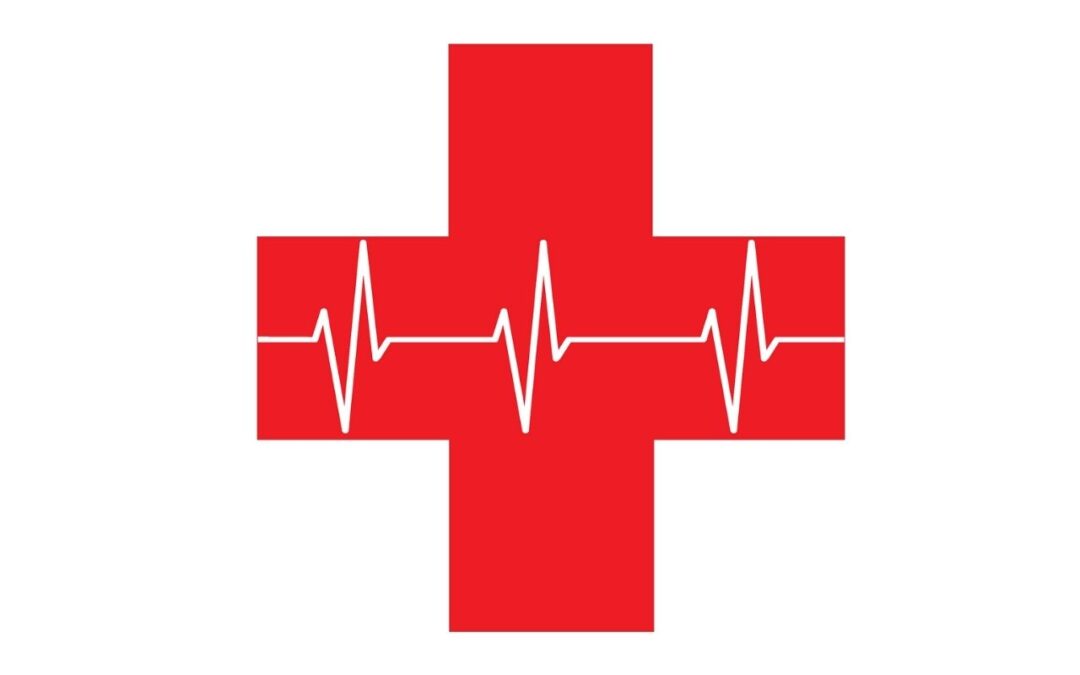As men and women grow older and mobility declines, falls can become more common, and more serious. A decline in elderly mobility is a key factor, but not the only reason seniors fall. Cognitive decline, physical obstructions, slippery ground, and medical equipment failure can all lead to a fall, and when an elderly person falls and hits their head, it can cause panic, fear, and real danger for all involved.
It’s important to know how to react in this dangerous situation for the best outcome of the fallen individual. That’s why we’ve put together a step-by-step list detailing what you should do when an elderly person falls and hits their head.
Table of Contents
Keep reading to learn the most important steps to take when an elderly person falls and hits their head.
Step 1 – Approach Carefully and Calmly
Any time an elderly man or woman falls, it is a serious situation. When they fall and hit their head, the stakes are even higher. But that doesn’t mean you should panic.
Keeping calm and approaching the fallen individually carefully can help prevent further damage. A panicked response can cause uneasiness and prompt the fall victim to struggle or stress.
Lowering yourself to the same level as the fallen person can set them at ease and allow for better communication (firstaidforlife.org.uk/first-aid-falls/).
Step 2 – Check for Responsiveness
Checking for responsiveness is critical. If clearly responsive and cognizant, there is a much better chance that the injury is not as serious as if the person is unresponsive or insensible.
If the person is responsive, continue to Step 3. If not responsive, take the following measures immediately:
- Start CPR
- Call 911 and request an ambulance
- If bleeding is present, stop the flow with a rag or piece of clothing (try not to move the head, neck, or spine)
Step 3 – Figure out how the Fall Happened
There are countless scenarios where an elderly person falls and hits their head. It can occur while walking down steps, standing in line at a crowded supermarket, or even standing up from the sofa. Figuring out exactly how and why the fall happened is important for diagnosing potential causes and effects of the fall.
Was the Fall a Result of a More Serious Illness or Injury?
There are a lot of situations where a fall can be the result of an internal disease or injury. While the fall itself is serious, if the person is experiencing a stroke, seizure, heart attack, or other unseen ailment, the fall may be secondary in importance.
Communicate with the fallen person and try and recognize symptoms of a more serious internal illness like confusion, dizziness, numbness, or difficulty breathing before, during, or after their fall. If they seem to be experiencing a medical emergency, Call 911 and request an ambulance.
How Exactly Did the Fall Occur – What Happened?
Have the fallen person detail how the fall occurred, exactly where they fell, how they hit their head, and how hard the impact was. This is important information to know, especially if care from a paramedic or doctor is required.
Step 4 – Determine Possible Injury or Source of Pain
After learning how the fall happened, and determining if it was the cause of a separate illness, now you can determine any possible injuries. Through communication and observation, pinpoint where they may have injured themselves, and if there is any bleeding, bruising, or sign of injury.
If the Head, Neck, or Spine, shows anything more than minor signs of injury, or the fallen senior is complaining of moderate to severe pain in any of those areas, you should NOT attempt to move the person – Call 911 and request an ambulance.
Step 5 – Help Them Into a Sitting Position
If there is minimal or no sign of injury, and the fall individual is coherent and alert, you can now slowly help them into a comfortable sitting position.
To re-iterate, do not move the person if any of the following scenarios are present:
- They are not responsive
- The person is experiencing symptoms of a medical emergency like a heart attack, stroke, or seizure.
- There is a visible, moderate to severe injury to the head, neck, or spine
- The person is experiencing moderate-severe pain in their head, neck, or spine.
Step 6 – Monitor for 24 Hours
Monitor them closely for 24 hours. Check for pain, dizziness, or cognitive decline (confusion, memory loss, lethargy, etc.).
If at any time new symptoms present, go directly to a doctor or call 911. After the fall, it may be necessary to check your elderly patient, friend, or family member into a short-term care facility for 24 hour care and observation. This is a great solution when 24 hour monitoring is impossible.
What Causes Senior Falls (and How to Prevent Them)
As you’d seen, there are lots of causes for senior falls. You may not even need to figure out what to do when an elderly person falls and hits their head, if you prevent the fall in the first place.
Here is a list of the top causes for senior falls, and how to prevent them:
- Mobility Issues – It’s common for seniors to experience difficulty walking, standing, or climbing. If an elderly person is experiencing mobility issues, try figuring out how to improve mobility in seniors before a fall occurs.
- Slippery Surfaces – Slippery surfaces such as snowy walkways, icy driveways, and wet tile are common places for fall-related injuries. Preparing seniors for winter by de-icing common pathways is an obvious solution to future falls. Also, be sure to clean up spills and excess water from cleaning immediately, and encourage the use of non-slip shoes.
- Physical Obstructions – A misplaced shoe, fallen pillow, or child’s toy can easily lead to a fall. In fact, with falling a leading cause of injury in seniors, keeping your surrounding neat and clean is one of our top recommended ways to prevent injury and illness in seniors.
- Pre-Existing or Unknown Medical Conditions – Certain conditions like epilepsy, MS, or Parkinson’s can make elderly individuals more susceptible to a fall. Quickly occurring medical conditions like heart attack or stroke can also cause the victim to collapse. If a senior is likely to fall due to these conditions, encourage them to use walking-assist devices like a cane, walker, or wheelchair, and closely monitor them while walking through hazardous areas.
- Confusion or Cognitive Decline – Cognitive issues can cause an individual to lose balance or forget where they are standing. If an elderly person you care for is exhibiting these symptoms, keep a close watch on them while they walk, and do not leave them alone in areas with lots of obstructions, foot traffic, or higher surfaces (like steps, platforms, sloping ground).
Sandyside Senior Living
This information was provided by Sandyside Senior Living in White Lake, Michigan. Sandyside specializes in advanced care for seniors with dementia, Parkinson’s, and all age-related illness.
Interested in learning more about Sandyside Senior Living? Contact Sandyside online, or call at (248) 698-3700.
To get in touch with Sandyside Senior Living please complete the form below:
VISIT SANDYSIDE SENIOR LIVING TODAY
PHONE: (248) 698-3700


